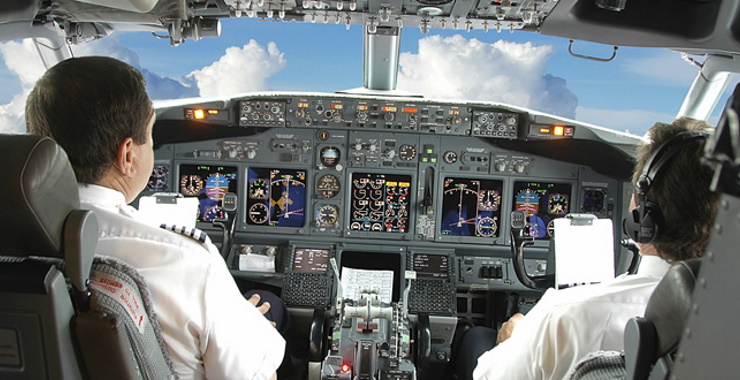Human Factors & Crew Resource Management
Humans play a massive role in the aviation industry. Therefore, human decisions and actions are naturally extremely important when it comes to many different situations within aviation. Humans and their impact when making decisions or taking actions within their job in aviation are considered human factors. Or, as the Australian Civil Aviation Safety Authority describes, "issues whether personal, social, environment or organization that affect how people perform tasks in their work reductions" (Australian Civil Aviation Safety Authority, n.d., para. 1). One of the most important considerations within aviation human factors is the concept of human error and looking into how the risk of error can be reduced in the future. (Australian Civil Aviation Safety Authority, n.d.).

One of the areas that work to address the reduction of human error within aviation, particularly amongst the flight crew, is crew resource management (CRM). Crew resource management works to strengthen crew communications, situational awareness, along with crew decisions making skills - all skills that are very important for those working within the aviation industry but are also human factors areas that could turn a situation for the worse (Crew Resource, n.d.). In fact, when human factors and the idea of CRM were beginning to come about in the 1970s, it had been determined that "70% of air crashes involved human error", often relating to areas that CRM looks to improve (Safer Air Travel, 2014, para. 1). Today, CRM plays a vital role within the aviation industry. Flight crews are trained to learn and understand how to effectively communicate as a flight crew, whether that be amongst pilots or amongst flight attendants as well, and make critical decisions with a distinct focus on aviation-related situations. The main concept of CRM is for crew members to be able to take note of any risks or threats that may be present and learn to address them most effectively and safely. The crew needs to be able to communicate their knowledge of the risk with other crew members in a quick, effective manner and be able to decide on a plan of attack to address the threat. With this training to sharpen these vital communication and decision-making skills, crew members can better ensure that sound decisions and effective action will be taken to address and eliminate threats - therefore, creating a safer travel experience for themselves and their passengers (Safer Air Travel, 2014).
Of course, skills such as communication and decision-making are important in all areas of life. But they hold a particular weight within aviation, with many lives often being on the line. Using CRM to help build more cohesive flight crews will allow for a decreased risk in human error and a safer flying experience overall.
References
Australian Civil Aviation Safety Authority. (n.d.). CNS/ATM resource kit – Chapter 8: Human factors. Civil Aviation Safety Authority. Retrieved December 14, 2021, from https://www.casa.gov.au/resources-and-education/publications-and-resources/industry-guides-and-publications/view-safety-kits/cnsatm-resource-kit/cnsatm-resource-kit-chapter-8-human-factors
Crew resource management. (n.d.). National Business Aviation Association. Retrieved December 14, 2021, from https://nbaa.org/aircraft-operations/safety/human-factors/crew-resource-management/
Safer air travel through crew resource management. (2014). American Psychological Association. Retrieved December 14, 2021, from https://www.apa.org/topics/safety-design/safer-air-travel-crew-resource-management
Interesting article, thank you!
ReplyDeleteThis was a great article and I must say that you absolutely nailed it. CRM is often talked about but means nothing if not applied properly or at all. Another point to add is that CRM needs to be a repetitive course to teach. Although everyone groans about going to re-hack CRM class, it is very much needed.
ReplyDelete